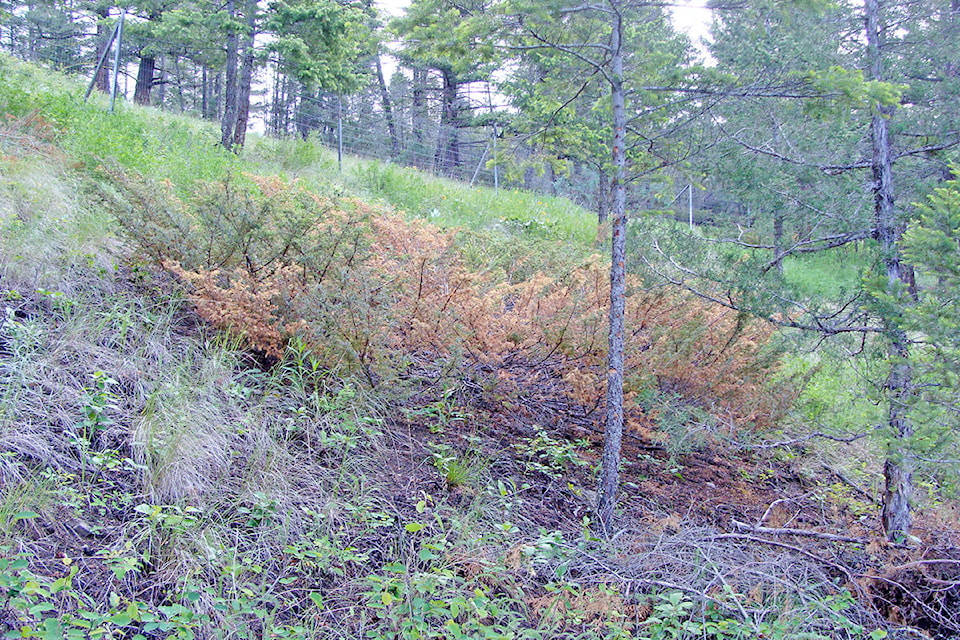I first noticed the presence of vole tunnels on my lawn this spring just as the snow was melting. They seemed to be feeding on the grass roots while tunnelling under the snow during the winter. After the snow was gone, I noticed some of the common juniper shrubs were turning red. As I examined the red branches I noticed the stems had been chewed severely enough to girdle them to cause their death.
The damage seemed confined to the prostrate prickly needled shrub species of juniper and not the tree like Mountain Juniper and so far there does not seem to be any damage to other trees or shrubs.
Since we have rabbits in the area and I have seen some damage by them in the past I thought they could be the cause but after consulting my Field Guide to Forest Damage in B.C. the voles were more likely the culprit.
According to the guide the damage occurs on a three to four year cycle when the vole populations are their highest. The common juniper has very thin bark and is therefore easily damaged by even these relatively small rodents.
According to some of my native plant books the wild and domestic forage value of these low prickly shrubs is not particularly high so I have been trying to replace some of them with other more palatable species. Besides the voles, the rather bitter blue berries are probably used by some bird species and the plant was used in various forms by the First Nations as a fumigant, deodorizer and cleanser and in a variety of medicines.
I have not actually seen or trapped any voles so can’t say for sure they are causing the damage, but according to the Mammals of B.C. Hand Book there are three vole species that could be in this area. The red backed vole, Heather vole and the field vole (field mice). In the case of the field vole, with up to 11 young per litter every 25 days during the breeding season it is easy to see how a population explosion is possible if conditions are favourable.
We have had trouble in the past with something eating the emerging vegetables in our garden but so far this year we have been spared any damage even though there must be a considerable vole population in the area. It could be that the rather wet spring has produced a wide variety of native forage that has been keeping rodents well fed and out of our garden.
The damage this year seems wide spread as I noticed lots of red juniper during my trip last week out to the Chilcotin.
A quick review of the Internet showed there was considerable damage to junipers and small trees in the Black Hills of South Dakota in early 2019 which was attributed to voles.
In my case some reduction in the juniper shrubs may work in my favour but any significant damage to domestic shrubs planted in people’s yards could be very serious. There are some remedies described on the Internet including cats, traps, wire protection and deterrents.
Jim Hilton is a professional agrologist and forester who has lived and worked in the Cariboo Chilcotin for the past 40 years. Now retired, Hilton still volunteers his skills with local community forests organizations.
newsroom@100milefreepress.net
Like us on Facebook and follow us on Twitter.
